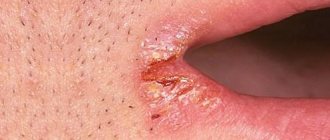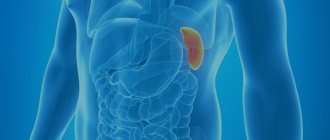According to statistics, 96% of people on the planet have experienced stress, disappointment, anger and a feeling of dissatisfaction with themselves at least once in their lives.
Healthy self-criticism is a completely natural and adequate process that allows a person to realize the mistakes they have made, analyze them and draw conclusions from the current situation.
But sometimes moments arise when objective dissatisfaction develops into pathological self-hatred, manifested in self-flagellation, as well as causing moral and even physical harm.
We will talk about how to recognize such a condition and what to do about it if you find it in yourself and your loved ones.
What is auto-aggression?
Auto-aggression is one of the forms of destructive activity directed by a person directly at himself. Destructive activity includes suicide attempts, injuries, alcohol abuse, drug addiction, self-flagellation, and derogatory statements about oneself [International Journal of Applied and Basic Research, 2016].
In psychology, auto-aggression is a defense mechanism of the psyche. When a person, for some reason, cannot direct an aggressive impulse to an external object that has become the cause of his anger, he redirects it to himself. This is possible for the following reasons:
- The object of anger has a personal meaning for a person: the fear of losing someone's love prevents one from expressing anger.
- Such displays of anger are condemned by society. Most often it is typical for teenagers: “I can’t express aggression because everyone will find out about it and judge me.”
- The object of anger is not available. For example, a person is angry at someone who has been dead for a long time [RabotaYouth, 2021].
Such a transfer occurs most often unconsciously and is emotionally more beneficial to the person himself than recognizing the fact of the presence of unpleasant, destructive feelings and introducing open confrontation.
Surprisingly, there are relatively supported forms of self-aggression in society, common as ways to relieve stress. They can be expressed in:
- consumption of alcohol and tobacco and even drugs in stressful situations;
- passion for extreme sports and recreation;
- choosing a hazardous area of activity;
- minor destructive behavioral reactions (tearing off scabs from healing wounds, biting nails and lips until they bleed, etc.)
From the point of view of psychoanalysis, unconscious self-harm - behavior in which a person always trips over something and gets bruises - is also a form of psychological auto-aggression [RabotaYouth, 2021].
Such self-destruction can manifest itself in alcohol abuse, eating disorders and forced sleep deprivation. It is not at all necessary for a person to think at such moments: “I am bad and I must punish myself.” Most often this happens on a subconscious level.
For example, young people may deliberately provoke fights or get involved in extreme forms of leisure. In preschoolers, one can also notice behavioral symptoms of auto-aggression, but on a psychological level they will not always be dictated by self-hatred.
It is important to understand the reason for this behavior and distinguish between behavioral and psychological levels. For example, workaholism does not always indicate self-aggression. After all, if a person is working on some important project whose deadlines are running out, it is quite natural that he stays late and works on weekends because he does not want to let the team down.
Most often, auto-aggression is based on hidden feelings such as anger and self-dislike. In simple words, auto-aggression is the coincidence of the subject and object of the expression of anger. Thus, self-hatred is a trigger for self-destructive behavior [RabotaYouth, 2021].
Perhaps one of the most complex and serious forms of self-rejection is immune autoaggression, during which the body’s defense system directs all its forces to fight the antigenic determinants of its own cells, as a result of which the body begins to kill itself. A similar mechanism is observed in a number of diseases, such as lupus erythematosus, rheumatoid arthritis, scleroderma, etc. [Big Russian Encyclopedia, 2006].
There are several categories that classify self-aggressive behavior.
- Intentional (cutting, suicide planning) and unconscious (victim behavior, desire for dangerous actions) auto-aggression.
- Direct (direct self-harm) and indirect (provocation of situations that create danger) auto-aggression.
- Psychological (workaholism, destructive thoughts, self-flagellation) and physical (self-mutilation) auto-aggression.
Often people suffering from auto-aggressive disorder deliberately or subconsciously provoke situations that are unsafe for their life, mental state and health.
Fanatical behavior is characteristic of both sports fans and people belonging to religious sects. Strict adherence to dogma, intolerance to other ideas that diverge from the ideas of the organization in which a person participates, lead to an increase in internal tension, which will seek a way out. And since direct external aggression, for example, in religious sects, is most often prohibited, the manifestation of emotions finds a way out in auto-aggression.
Extreme sports, drunk driving and driving on dangerous roads, bad habits, any type of addiction - all these are manifestations of hidden, “time-drawn” suicide.
Signs of auto-aggression
Recognizing self-aggression in an adult can be very difficult. People tend to hide such manifestations because... They are afraid to see a negative reaction addressed to them, because of which their situation could significantly worsen.
If you suspect that someone you know has a tendency towards self-aggression, you should pay attention to the following symptoms:
- fresh or recently healed wounds, burns and bruises;
- long sleeves or trousers, especially in hot weather;
- frequent causeless irritability;
- frequent desire to be alone;
- words about one’s own inferiority, self-accusation;
- suicidal tendencies, desire to disappear.
If you detect the above symptoms, you should calmly talk with the person, convincing him of the need for diagnosis by a specialist. It is possible to finally cope with auto-aggression only after a diagnostic examination by a psychotherapist.
Direct signs of auto-aggression, upon observation of which it is necessary to urgently sound the alarm, include:
- suicide attempts;
- prolonged refusal to eat (not caused by any other disorder);
- self-inflicted serious bodily harm (cuts, burns, bruises).
Auto-aggression should be distinguished from direct aggression, which can be expressed in actions towards other people or objects.
There are cases when external manifestations of auto-aggression are used to manipulate people. In such cases, the person usually uses the self-aggressive personality pattern solely to attract attention.
You can distinguish manipulation from direct auto-aggression by observing a person. If self-destruction occurs only in the presence of other people, most likely this person is a manipulator. Most often, such people use the behavior of a “victim” to achieve some goals.
In such cases, indulging the provocateur will not lead to solving problems, because the person will get used to getting everything with the help of hysterics. Deprivation or retribution is unlikely to help deal with the manipulator. The most optimal solution to the problem would be a calm discussion aimed at understanding what is happening on both sides.
Complications of auto-aggressive behavior
Through auto-aggression, the child gets used to reacting to difficult life situations, while other ways of resolving conflicts are not formed.
With age, such a person:
- unable to have a constructive conversation;
- cannot express and defend his opinion;
- tries to avoid negative reactions and evaluations from others, therefore limits his behavior;
- has an autistic character;
- anxious and suspicious;
- has difficulty adapting to an unfamiliar society or a new team.
Sometimes, due to the inability to socialize, such people leave work and cannot start a family or make friends.
The main causes of auto-aggression
The manifestation of auto-aggression in adults is a kind of defense mechanism in relation to an unpleasant situation for the psyche. Often a person tries to cope with stress by causing himself a little pain. For some time this may bring relief, but the further it goes, the worse [International Journal of Applied and Basic Research, 2016].
This begins to become a habit, a person may stop noticing how every time he experiences negative emotions, he begins to itch, bite his nails, and think badly about himself. This behavior is not a solution to the problem, it only aggravates the condition, since subsequently the person begins to hate himself even more, while not daring to ask for help and increasingly moving away from other people.
In psychology, auto-aggression is a fairly broad concept, covering both pediatric and psychological branches, and the reasons for its occurrence are numerous. Most often it manifests itself in people prone to neuroses, depression, introverted and demonstrative behavior. Many studies trace a connection between the occurrence of auto-aggression and a low level of self-esteem, masochistic personal accentuation of character [Russian Medical and Biological Bulletin, 2017].
Auto-aggression in adults can develop in people with an unstable and sensitive psyche, increased emotionality, a high capacity for empathy, and a tendency to idealize others and belittle themselves.
Acute and painful empathy is considered one of the special cases of autogression. The reason for this behavior lies in excessive sympathy for others. Self-harm may occur to relieve the pain of another, or if the sympathizer considers himself to be at fault in a given situation, thereby manifesting and punishing himself for it. But the lack of empathy towards a person can cause him to behave like a victim, aimed at attracting attention, sympathy and support.
External factors contributing to the occurrence of auto-aggression are traumatic situations, disruption of the socialization process, physical and psychological violence. Thus, the development of auto-aggression from childhood is facilitated by a turbulent situation in the family, frequent quarrels between parents, physical and psychological punishment of the child, humiliation and ridicule, ignoring needs and lack of manifestations of love, tenderness and care.
Auto-aggression in adults can also appear against the background of entering a religious community, where the implementation of the required standards of behavior can be extremely difficult or, when faced with internal protest, can cause great tension.
There are also exclusively biological reasons for the appearance of this disorder: mental illness, auditory and visual hallucinations and overvalued ideas. In such cases, only urgent hospitalization will help, because a person influenced by “voices” would rather listen to them than to those close to him.
According to Doctor of Psychological Sciences, professor, specialist in the field of general and differential psychophysiology Evgeniy Ilyin, women are more likely to experience auto-aggression, and men are more likely to experience hetero-aggression (external aggression). This is largely due to the fact that girls in childhood are prohibited from expressing anger and anger [RabotaYouth, 2021].
Auto-aggression and hetero-aggression are not mutually exclusive phenomena, opposite to each other. Anger, no matter where it is directed, has the right to expression. The question is how adequate or inadequate it will be.
When a person, in a fit of anger, hits another person and destroys everything around him, this is an inadequate expression of heteroaggression. Thus, heteroaggression is not opposed to auto-aggression, but rather to different ways of responding at the behavioral level.
Auto-aggressive behavior is associated with a person’s personal qualities. In adulthood, such a reaction to stress indicates psychological immaturity and a number of other psychological and social disorders.
If we talk about the relationship between auto-aggressive behavior and the characteristics of the nervous system, then in melancholic people, as well as in people who are sensitive, including to the feelings of others, auto-aggression will occur more often than in choleric people, who, on the contrary, strive to express everything. Naturally, teenagers are more often susceptible to self-destructive behavior, since adolescence, in principle, itself is a conflict stage in a person’s life. Excessive authoritarianism of parents at this stage is a direct path to auto-aggression [RabotaYouth, 2021].
Auto-aggression can occur both consciously and unconsciously, so a person alone cannot always explain what he is doing and what are the reasons for his behavior. In some cases, recognizing auto-aggression can be quite problematic, since a person who has retained the ability to think critically has a desire to hide this aspect of his life.
How can we help solve this problem?
Treatment of auto-aggression begins with diagnosis, identification of the child’s basic needs and resources - this is done by a neurologist. After his consultation, a decision is made on the need for intervention by other specialists. Often, joint work of a neurologist and a psychiatrist is effective in solving this problem. Psychological and pedagogical rehabilitation, within which art therapists, ABA therapists and other specialists work, also has a positive trend.
A rehabilitation and developmental route is drawn up after undergoing a comprehensive diagnosis, during which a program that is relevant at the time of diagnosis is developed. Basically, the leading specialist of the course is an ABA therapist (sometimes a specialist involved in emotional-volitional correction), and the activities of the rest are consistent with the plan he uses. Call to schedule a consultation at our office in Sochi.
Pros of auto-aggression
Auto-aggression itself, like many other symptoms of internal problems, initially has a positive function. For example, a child does not want to spoil the relationship with his parents, so he subconsciously directs all the anger towards himself.
The famous American psychiatrist Karl Menninger believed that, for example, self-mutilation is the concentration of a lethal impulse on one part of the body in order to avoid suicide. Only the hand is cut off, but the man himself remains alive. But, one way or another, in case of pronounced self-destructive behavior, you need to contact a specialist [RabotaYouth, 2021].
There is nothing wrong with a person being critical of his capabilities and abilities. Sometimes, to achieve a certain result, you just need to try and gather your will into a fist. But auto-aggression is always destructive. There is a certain relationship between personality traits and the tendency to self-destruct. For example, a young man with whom his lover has broken off may purposefully injure himself in order to attract her attention.
The reason why self-aggression in adults is increasingly common in society is because of its special benefit for the patient. With its help, you can let go of unbearable feelings or, conversely, force yourself to feel at least something, distract yourself from an unbearable situation or gain control over it, while remaining with the same mask of friendliness, calmness and well-being on your face.
There are no bad emotions and feelings: anger has the same right to exist as love. And suppressing this anger can easily lead to withdrawal or an outburst of aggression directed at weaker people.
Auto-aggression in children
The situation in the child’s family plays a major role in the formation of auto-aggression. Important factors such as emotional insecurity, constant feelings of fear, shame or guilt provoke the emergence of negative experiences. These experiences persist into adolescence and can manifest themselves in the form of negative ideals that form destructive patterns of behavior: “punishment seeking”, auto-aggression, drug addiction and antisocial actions [Clinical and special psychology, 2018].
Research shows that children and adolescents who have experienced serious trauma in the past (for example, sexual or physical abuse) are more likely to engage in self-aggression. This is partly due to the fact that violence changes the physical response to the perception of pain and provokes various biases in the psyche. A victim of violence may think similarly: “If this happened to me, then I am bad and deserve it” [RabotaYouth, 2021].
But violence is far from the only reason for redirecting anger inward. Careless phrases from parents like “It would be better if you didn’t exist at all” or “The neighbor’s boy is great, but you’re not like that” can also cause self-hatred in the child.
Manifestations of auto-aggression in a preschooler may indicate the development of pathophysiological processes or mental development disorders. In some situations, this behavior may be the result of poor adaptation to the social environment.
The manifestation of auto-aggression is especially typical for children suffering from autism. The mental world of a child diagnosed with autism is limited by his own ideas, and therefore even minor changes can cause strong outbursts of anger in him: from invasion of his personal space (especially in public places) to the slightest changes in the environment.
Parents should notice in what situations auto-aggression manifests itself, try to avoid such moments and not leave the child alone. In some cases, medical attention may be required.
At the age of three, the child experiences a period that psychologists and psychiatrists call “me.” He has achieved a certain level of independence, but has not yet fully learned to take care of himself, so he gets angry if he cannot, for example, tie his shoelaces.
This period is characterized by outbursts of anger, protest and denial of previously attractive situations. Parents should be polite to the child and allow him to show independence if this does not pose any danger. Sometimes it is useful to offer your help. In case of aggression, it is enough to distract the child by switching his attention to something else.
If the phenomenon is observed in a child, parents should be attentive to the needs of the growing individual. Auto-aggression in children is a reaction to dissatisfaction with the behavior of their parents. But since it is difficult for a child to explain what exactly he is dissatisfied with and to project anger onto his parents, he does this towards himself. The ideal option in such cases is the help of a child psychologist [Russian Medical and Biological Bulletin, 2017].
For a complete diagnosis and subsequent treatment, you must consult a specialist. A child, like an adult, in such cases requires the help of a psychologist, and in more complex cases, a psychotherapist. The longer treatment is delayed, the more difficult it is to subsequently treat such a patient.
Self-destructive behavior can be present at different ages, affecting both children and adults. But auto-aggression reaches its peak in adolescence. Since during this period strong hormonal changes are observed in the body, which, among other things, increase emotionality, it is more difficult for a person to react normally to problems. The manifestations of psychological trauma inflicted in childhood are aggravated. Adolescents may experience frequent suicidal impulses and open hatred of themselves, especially their appearance and dignity.
Teenagers are prone to self-aggression due to physiological processes and hormonal changes in the body, which certainly affects their psycho-emotional state.
Adolescence is a rather difficult period of puberty associated with hormonal changes. If at primary school age a child was oriented towards the opinions of parents and teachers, then in the transition period it is important for him to please his peers. In an effort to achieve socially approved qualities in their age environment, adolescents commit actions that are directly related to risks to health and even life.
Treatment of auto-aggression
Auto-aggression in adults and children can be treated at any stage, but the priority for moving along the path of recovery is the person’s awareness of what is happening as a problem that goes beyond the norm [Social and clinical psychiatry, 2009].
The first step in working with self-aggressive behavior is to determine the reasons for its occurrence or development in order to find new, less traumatic ways to overcome unbearable experiences in the future. For independent work, reorienting behavior and replacing destructive actions with supportive ones may be suitable.
Our online program “Mental Self-Regulation” will be an excellent assistant in the fight against stress and any other negative conditions. We've included the best techniques, techniques, tips and tricks that are so simple and accessible that they can easily fit into your lifestyle. By implementing these tips into your life, you will learn to easily cope with negative emotions and painlessly move into a resourceful state.
You need to start by recognizing the problem. If you notice signs of self-aggression, but at the same time consider them normal, it will be almost impossible to help you. And if you understand that self-destruction is a path to nowhere, try applying the following tips.
Analyze your feelings
Understand your anger and understand where these feelings come from and who they are directed at. Allow yourself to be a little angry, but don't blame yourself for it. Realize that you are a person like everyone else and that you have the right to “let off steam.”
Remember that anger and anger, when handled correctly, can be very beneficial and aimed at maintaining your emotional health.
Abstract yourself from negative experiences
According to psychologists, sublimation is considered the most productive mechanism for experiencing negative emotions.
When you feel angry with yourself, beating yourself up, or even wanting to harm yourself, try to distract yourself from such thoughts by doing things you enjoy that bring you pleasure.
Try to calm down, listen to pleasant music, drink tea or relax in the bath. Playing sports is also a great way to throw out all the accumulated negativity.
Speak out
Often, in order to solve a problem that has arisen with another person who has caused you negative emotions, it is enough to simply tell him about it. Most quarrels occur precisely because of the inability to speak openly about your feelings.
If you can't cope with your anger towards a specific person, for example, your boss, and at the same time you can't say anything to him at work, try talking about it with your friends, a psychologist, or simply write down everything that worries you in a diary .
Ask for help
If you feel that you cannot cope with your problem on your own, do not hesitate to ask for help. Ask your family and friends to support you. If necessary, contact a qualified professional. Remember that there is no shame in this. Your physical and mental health comes first.
Treatment will most likely require a combination of psychological work and medications (tranquilizers and antidepressants), the dosages and combinations of which are selected by the doctor individually in each case.
Self-aggression often accompanies other mental illnesses, such as obsessive-compulsive disorder and schizophrenia. In addition, if the patient has a serious reason for self-destructive behavior, for example, an undeveloped trauma “buried” in the depths of the subconscious, he is unlikely to be able to independently and safely work through it.
For a person suffering from auto-aggression, the help of relatives and friends is very important. Those around him can help him by showing care, support and love. It is important to stay close when experiencing difficult and negative emotions, showing him that he can open up and ask for help. Such people should be praised more often and, if possible, criticism should be avoided and in no case should you use humiliating and offensive statements.
Compulsory treatment of auto-aggression is prescribed in the presence of a threat to human life and health, suicidal behavior, bodily injury and refusal to eat.
Forecast and preventive measures
When undergoing full therapy and following all medical recommendations, prognostic expectations are quite favorable. A number of patients ask our psychiatrists how to completely get rid of a possible relapse of auto-aggression in the future. We offer them to undergo rehabilitation - a set of restorative and preventive measures that consolidate the results of treatment.
If you have a problem and you don’t know how to treat it, contact our Leto mental health center. Call 8(969)060-93-93 and we will make your well-being easier as soon as possible.









